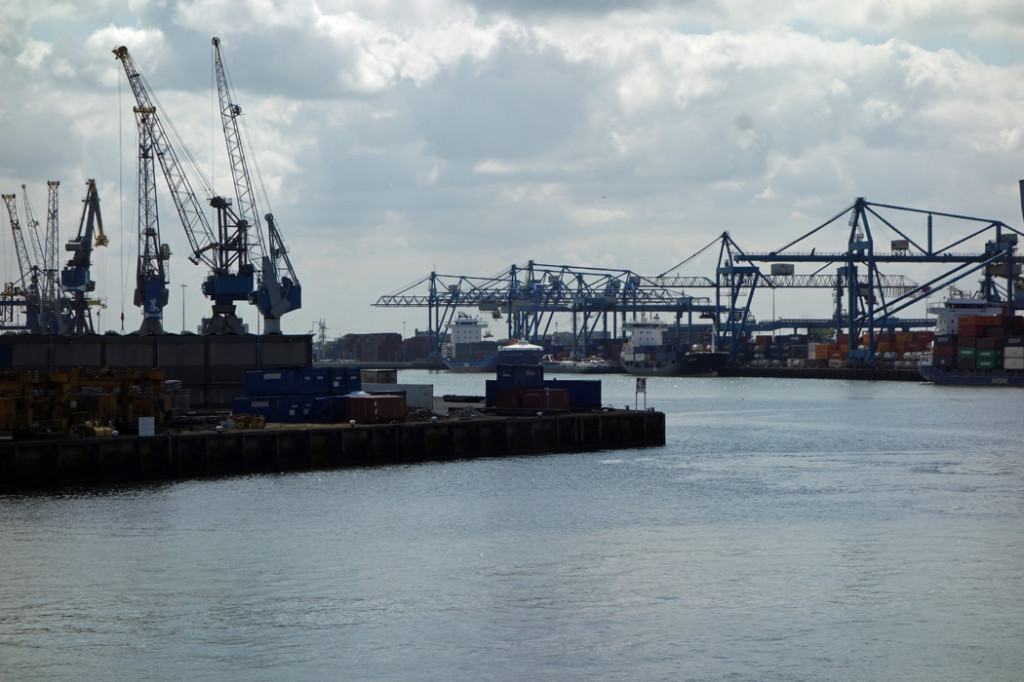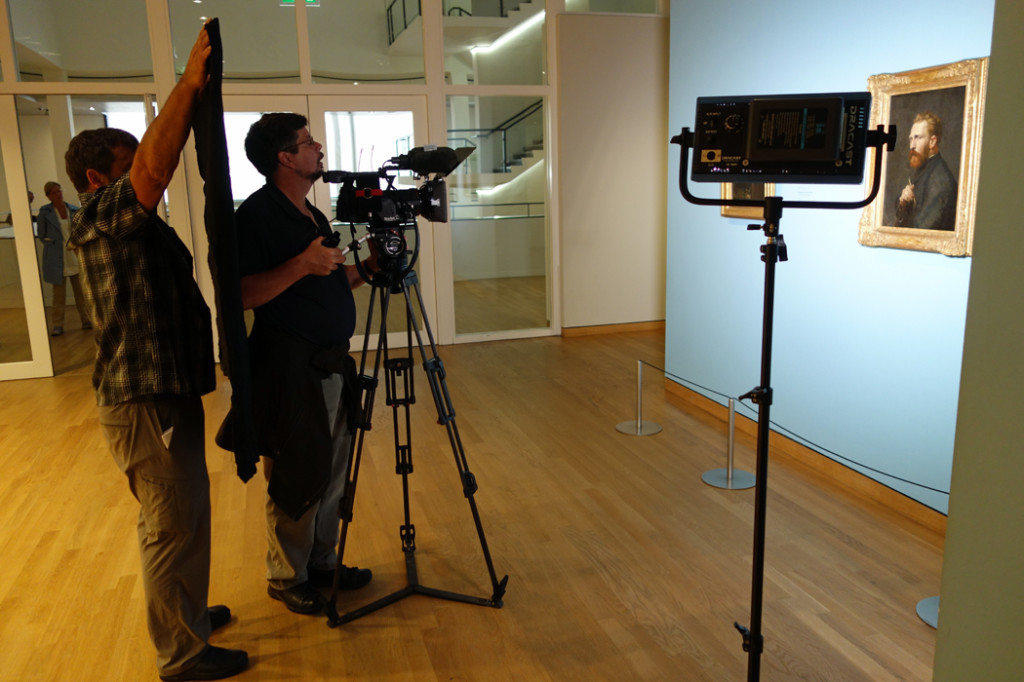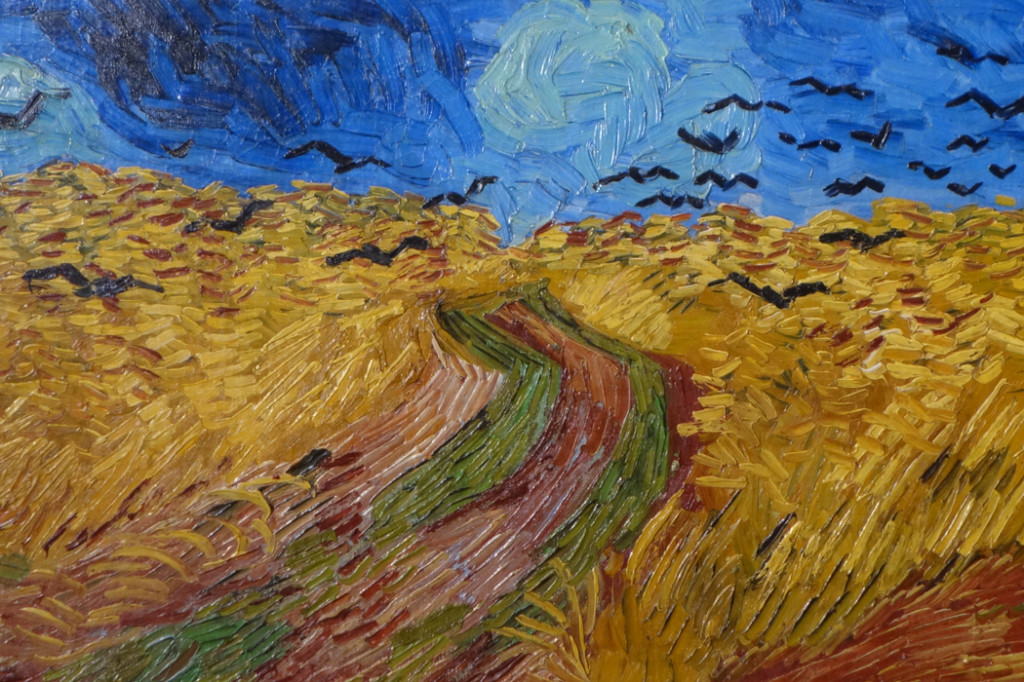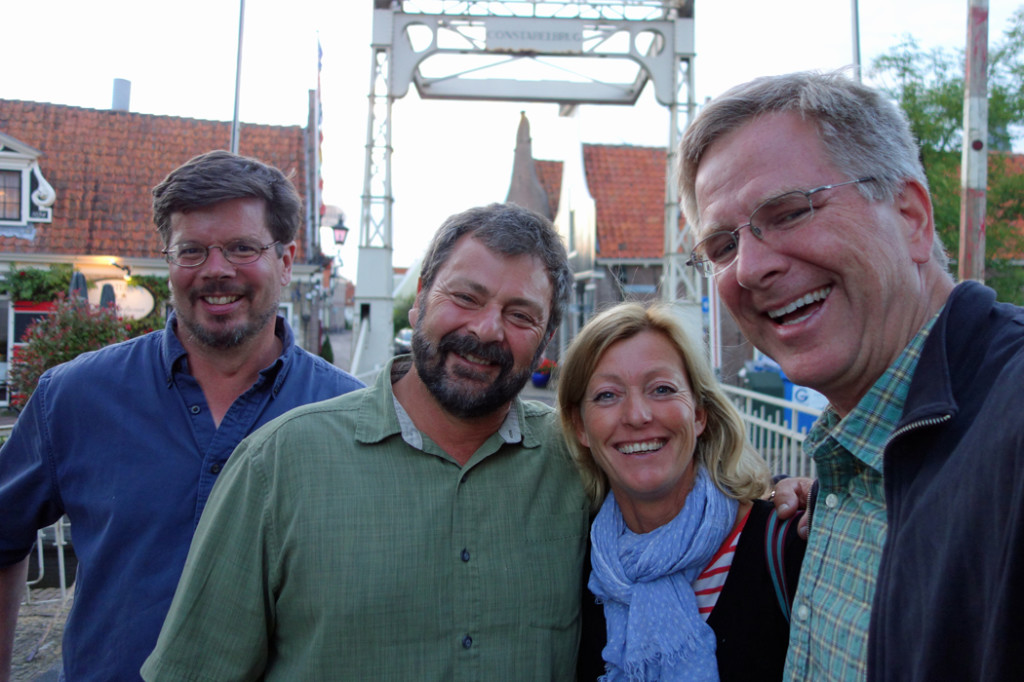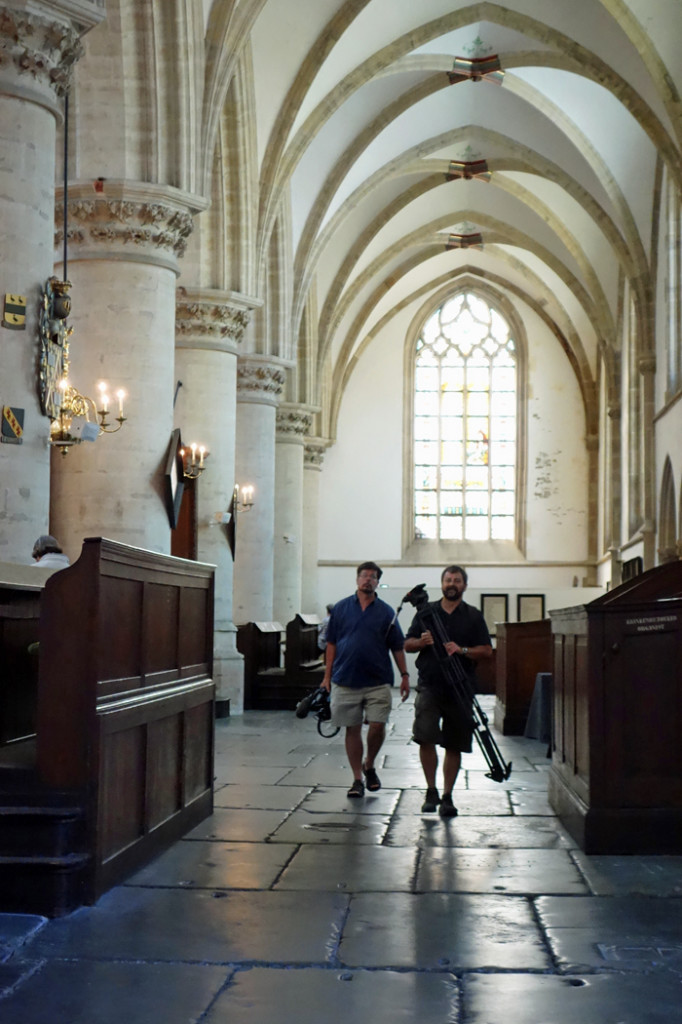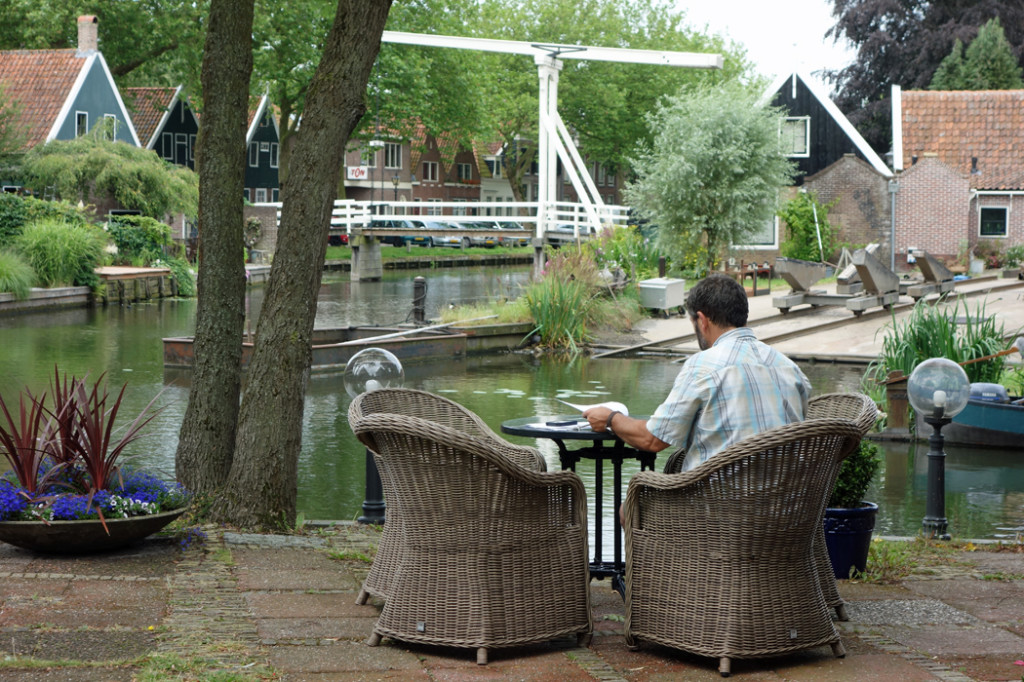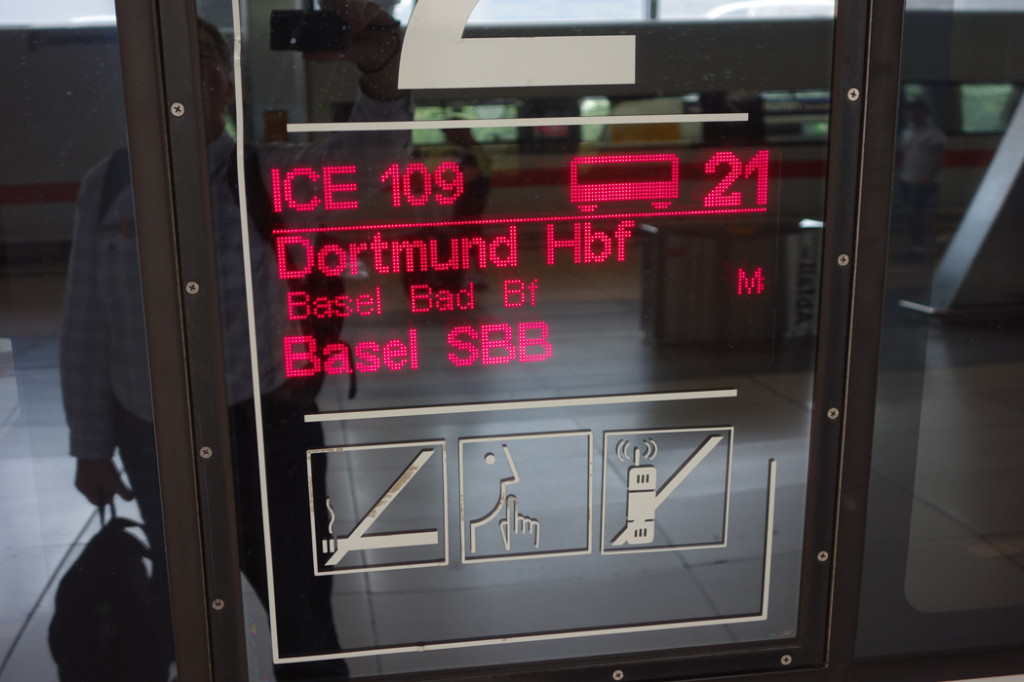For our new Netherlands TV show, we’re going big and we’re going small — from minuscule Marken to muscular Rotterdam. In this country of contrasts, century-old boats, glassy skyscrapers, and public urinals all have their place.
Two of the cutest and most touristy towns in the Netherlands are Volendam and Marken (both about half an hour north of Amsterdam, and popular day-trip destinations for bus tours). While I can’t handle the big-bus mass tourism of Volendam, I love cute little Marken.
During my scouting trip this spring, I met a club of men who love to sail their hundred-year-old fishing boats on the inland sea — so we arranged for them to sail us from Volendam to Marken. It was great filming and great fun. Our boat, from 1905, was filled with heritage. Our friends explained how their vessel has no built-in keel (as you’d expect on a typical sailboat) because the waters here are too shallow. Instead, it has a side keel, which can be dropped and hoisted by rope and lashed into place as needed. Originally, the boat was run by a skeleton crew of two: a captain and a boy. They’d go out for five days of fishing…then come home on Sunday to go to church.
There was what looked like a historic old saying painting on to the boat’s galley door (which I’m sure countless tourists had photographed because it looks salty and rustic). But it actually says, “If you want to be poor, use this boat for fishing. If you want to be wealthy, use it for tourism.” Classic Dutch humor and candor.
When doing a TV show on the Netherlands, it’s a temptation to make everything seem all cute and sweet — like Marken. After all, I finish the script by saying, “Traveling here, sooner or later, you’ll find yourself exclaiming, ‘Everything’s just so… Dutch!’” But the country has long been a mighty trading power, and no show on the Netherlands would be complete without the huge, no-nonsense port of Rotterdam.
Mighty Rotterdam has a gleaming skyline and Europe’s largest port. It’s a reminder of the Dutch knack for international trade. Locals say that while the money is spent in Amsterdam…it’s made here in Rotterdam. They boast that shirts in Rotterdam are sold with the sleeves already rolled up.
Rotterdam’s harbor is the third-largest in the world. The port handles 35,000 ocean-going vessels each year — that’s almost a hundred ships a day. While most of these ships sail the open seas, this is where the Rhine River meets the ocean. And from here, riverboats — filled with either tourists or cargo — can go all the way through Europe to the Black Sea.
Speaking of big cities, in my 3,200-word Amsterdam script, I wanted to bring up the theme of toleration. My challenge: to artfully weave together marijuana, prostitutes, pilgrims stopping by on their way to Plymouth Rock, hidden Catholic churches, the Holocaust, Anne Frank, and the Dutch Resistance. I wanted to be challenging, but without abusing my bully pulpit. It was a fun writing challenge, and I think it worked. I started the section of the show with this “on-camera,” zoomed in close to my face: “Every corner of Europe comes with a unique flavor and cultural surprises. Small-is-beautiful Holland feels quintessentially European. It’s charming. It’s progressive…” — then, stepping out from behind a public urinal on the street as the camera zoomed out — “…and, with the local passion for tolerance, it’s occasionally shocking. Prepare for some differences: curbside urinals. Prostitutes who are unionized, taxed, and regulated. And coffeeshops that sell marijuana.”
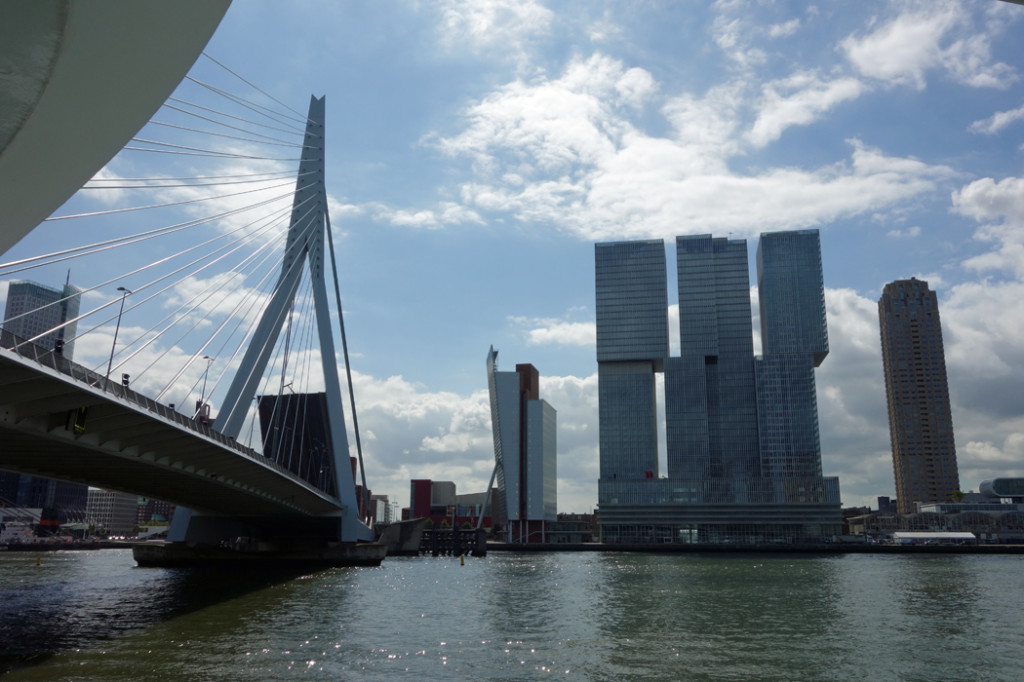 Rotterdam was bombed flat in World War II. But rather than rebuilt quaint (as most Dutch towns did), Rotterdammers embraced the chance to go in another direction: bold modernity.
Rotterdam was bombed flat in World War II. But rather than rebuilt quaint (as most Dutch towns did), Rotterdammers embraced the chance to go in another direction: bold modernity.
You can appreciate the immensity of Rotterdam’s mighty port with a harbor tour, which we filmed for our show. While it was OK, the similar harbor tour in Hamburg is far more impressive. What are your favorite harbor experiences in Europe?
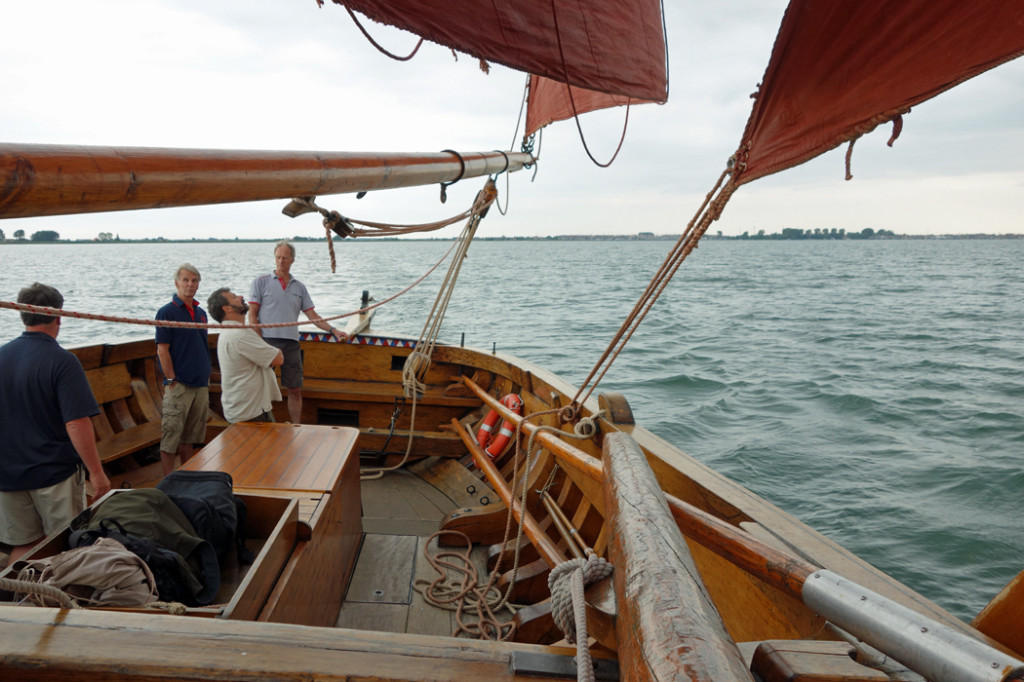 We hitched a ride on this traditional Waterland sailboat from Volendam to Marken.
We hitched a ride on this traditional Waterland sailboat from Volendam to Marken.
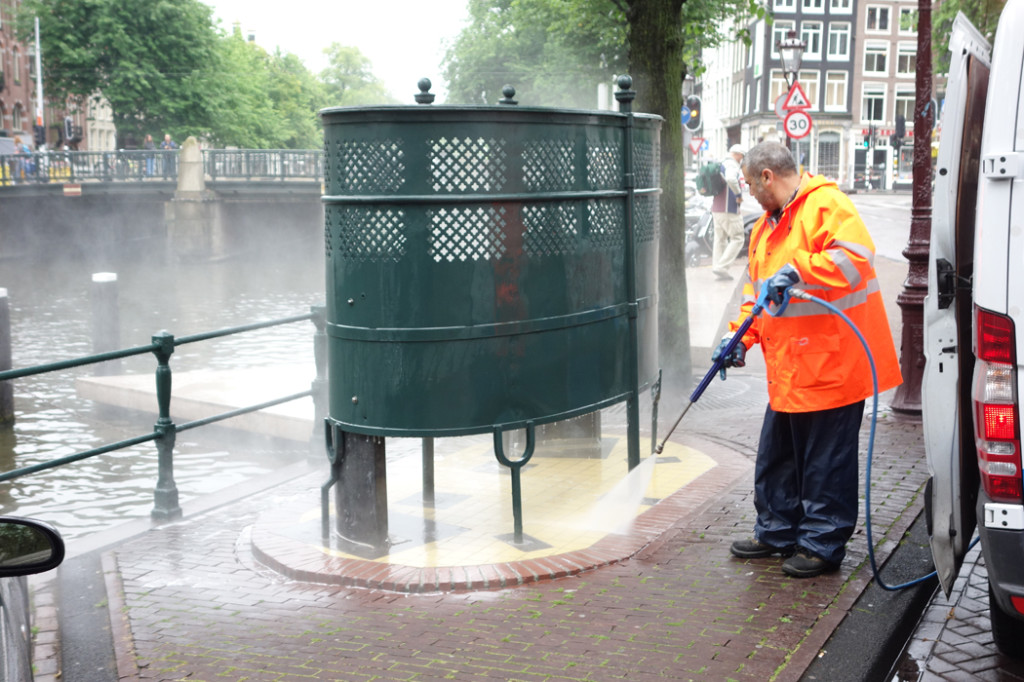 Amsterdam’s public urinals are kept very clean — and ready for American film crews to incorporate into their scripts.
Amsterdam’s public urinals are kept very clean — and ready for American film crews to incorporate into their scripts.
